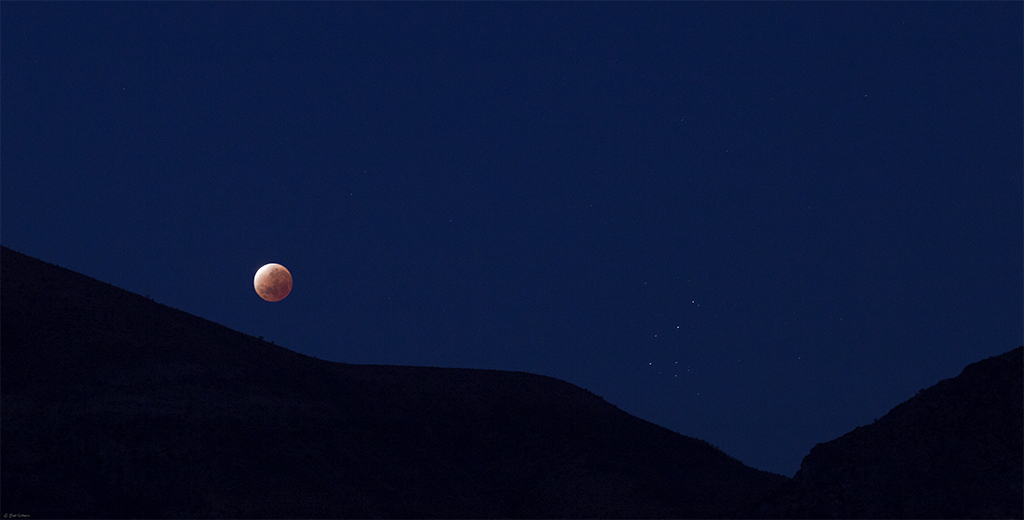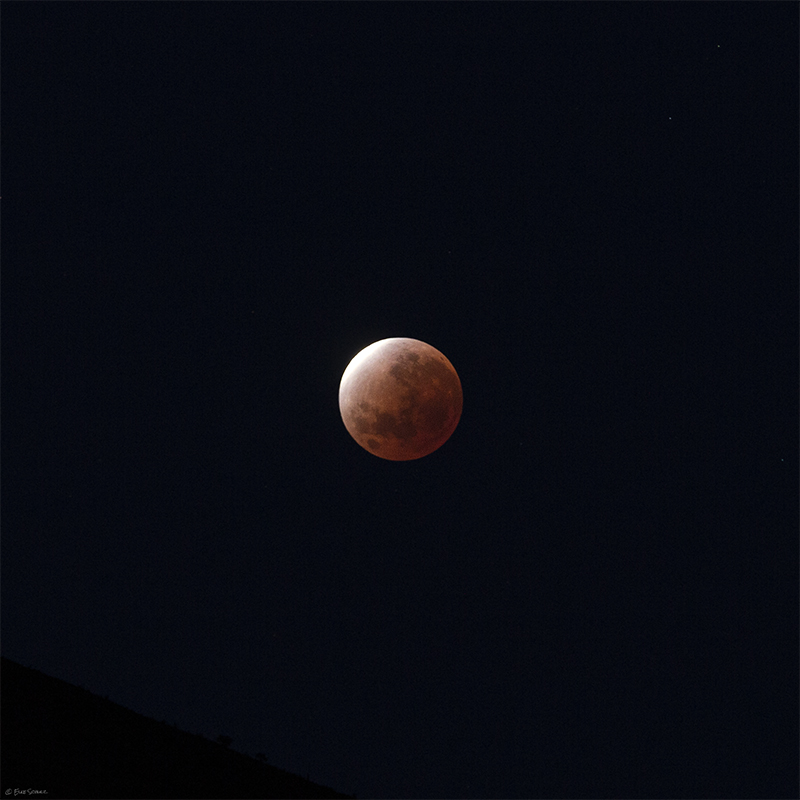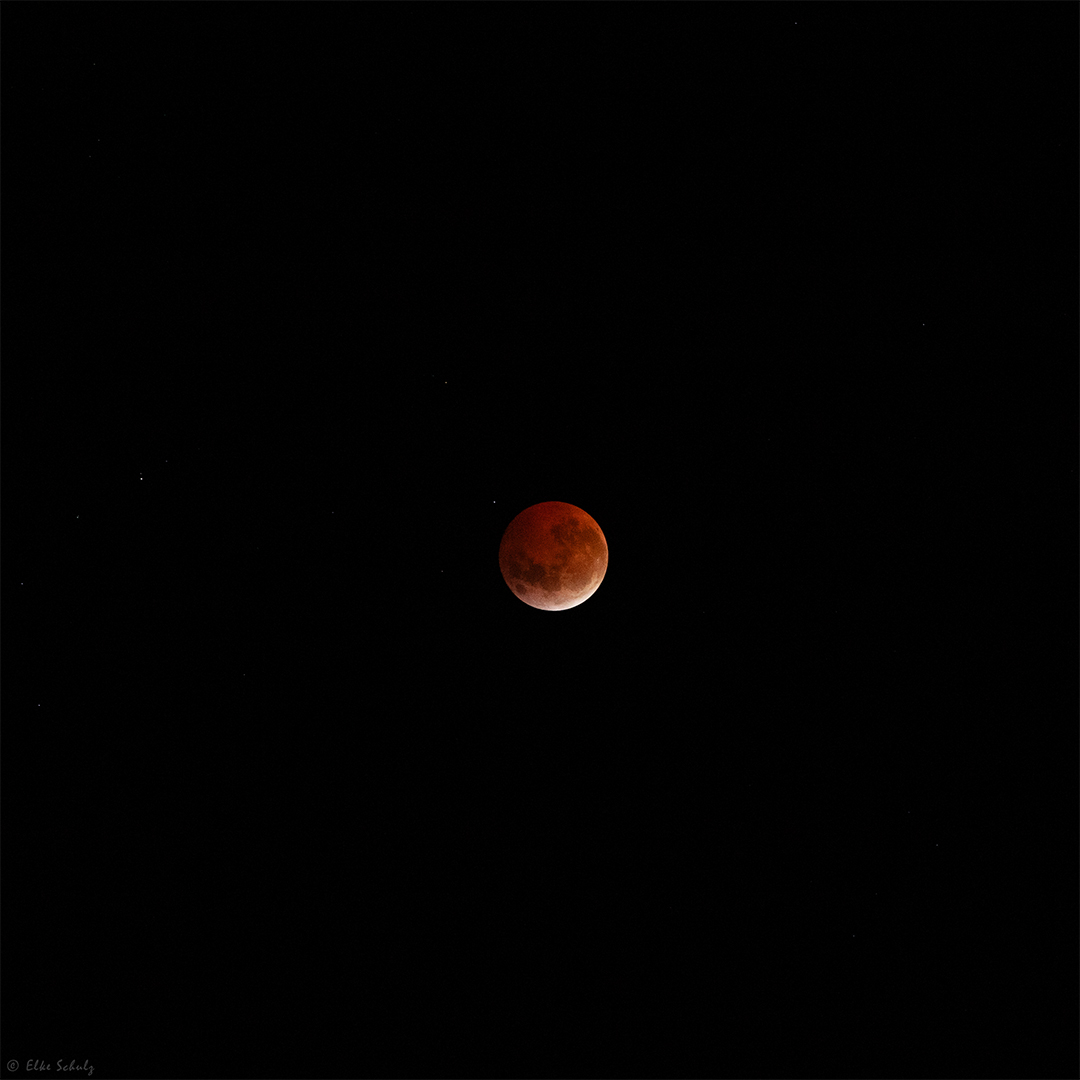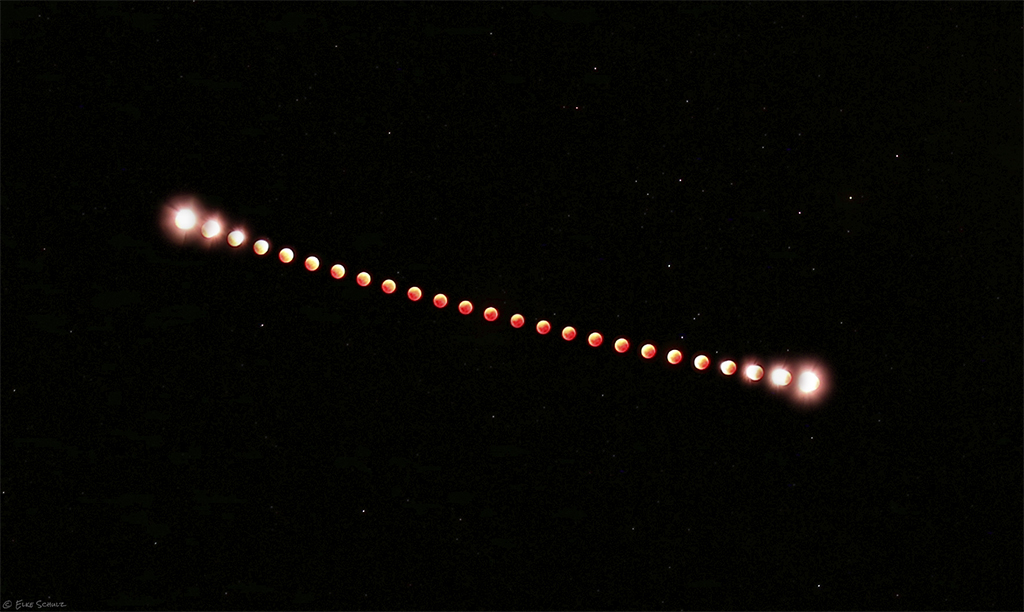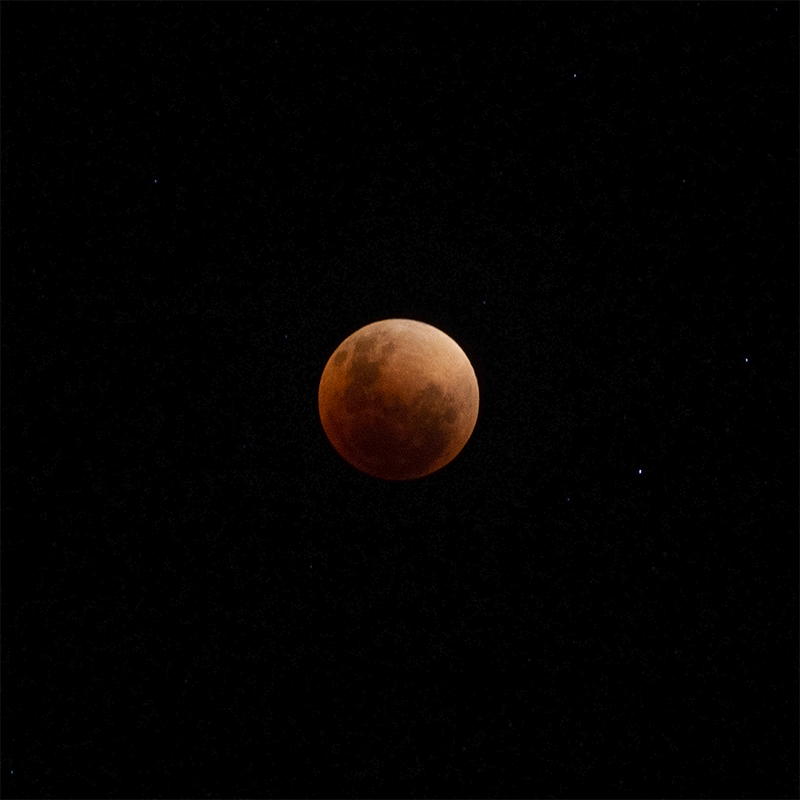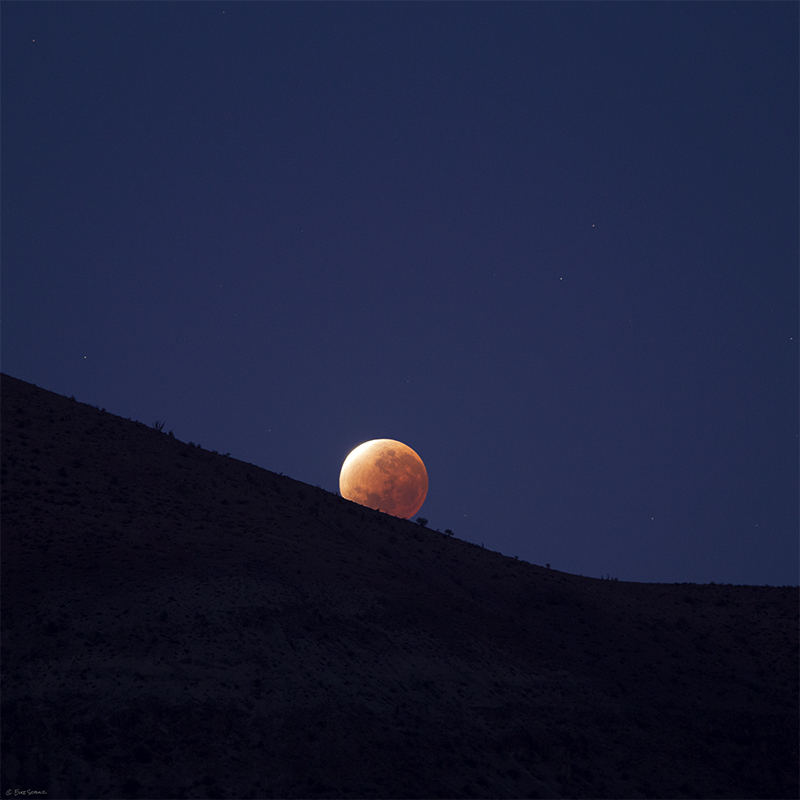
Partial Lunar Eclipse
On November 19, 2021, a large part of the world was treated to a lunar eclipse. A lunar eclipse occurs when the Sun, Earth, and Moon align so that the Moon passes into Earth’s shadow. In a total lunar eclipse, the entire Moon falls within the darkest part of Earth’s shadow, called the umbra. In this eclipse, up to 99.1% of the Moon’s disk entered Earth’s umbra. Therefore, this eclipse is not called a total lunar eclipse, but falls into the category of a partial lunar eclipse. In fact, it was the longest partial lunar eclipse since February 18, 1440, and it will remain the longest partial lunar eclipse for 648 years until February 8, 2669.
Here in Chile, it was visible in the predawn hours. Originally, I had planned to shoot the eclipse at a reservoir in the area. However, when I was getting closer, fog appeared that got increasingly thicker. So, I rushed back, and luckily found a place where the moon was not yet obstructed by our local mountains.




